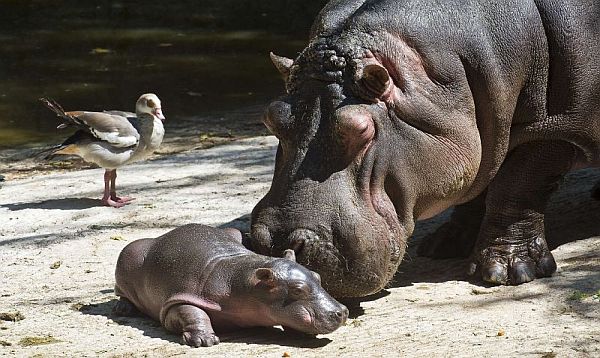Mexico City - The Chapultepec Zoo is celebrating the first birth of a hippopotamus in 16 years and the public can help select a name for the animal. Citizens can vote for the baby’s name, choosing from among Igoli, which means 'gold' in Zulu; Haji, which means 'noble' in the Swahili language; and Mabbina, which means 'joy' in Swahili.
 |
The Chapultepec Zoo has three adult hippos, including a 36-year-old male called Villita, who was born at the park, and a 25-year-old male known as Güero, who was born at the San Juan de Aragon Zoo. Güera, a 3-year-old female hippo, came from the zoo in Queretaro and is the baby’s mother.
The common hippopotamus (Hippopotamus amphibius) are huge animals that can weigh up to 4.5 tons, and live in the rivers and lakes of sub-Saharan Africa, usually belonging to herds of 10 to 15 animals.
The Chapultepec Zoo, located in the forest of the same name in the Mexican capital, is the largest attraction of its type in Latin America. It opened in 1924 and has more than 2,000 animals from over 200 species on display and is free for residents, with an estimated 5.5 million to 8 million people visiting each year.
Original Story


